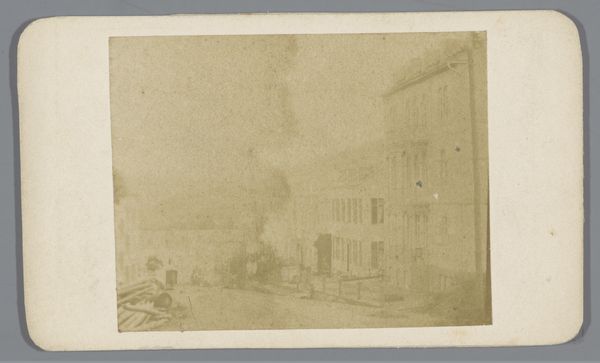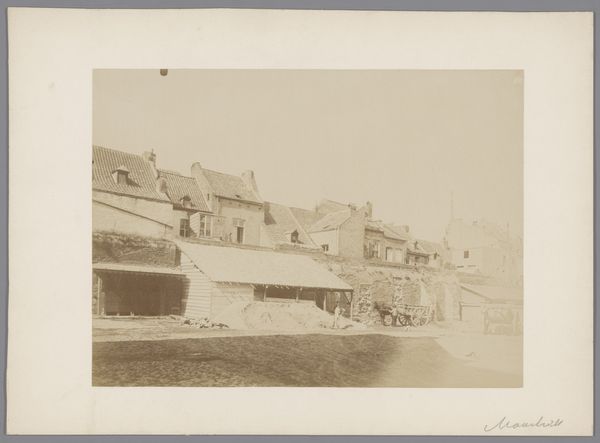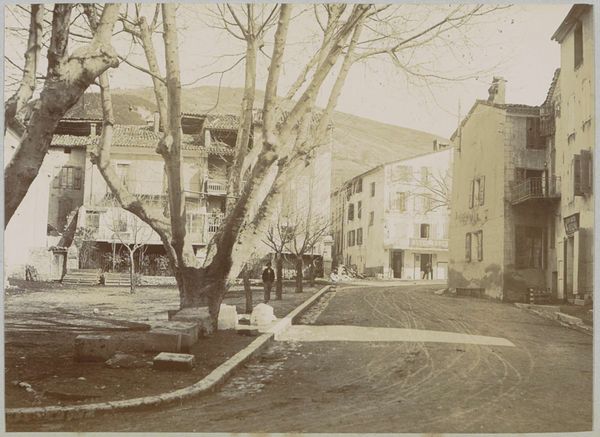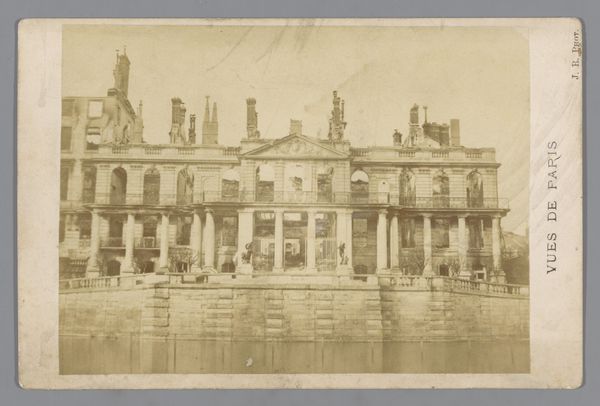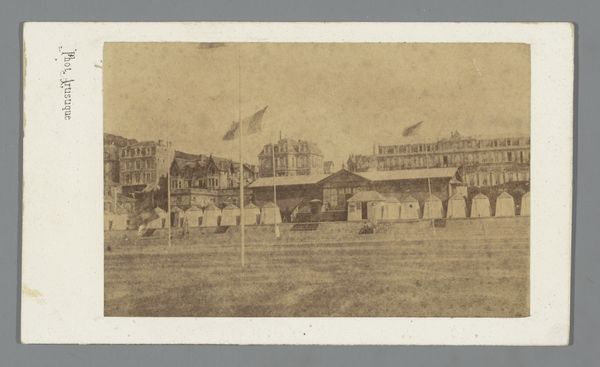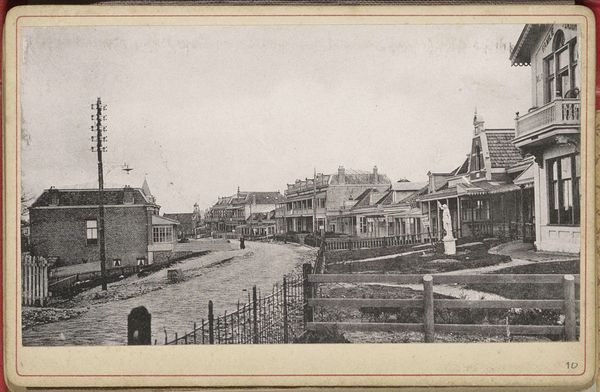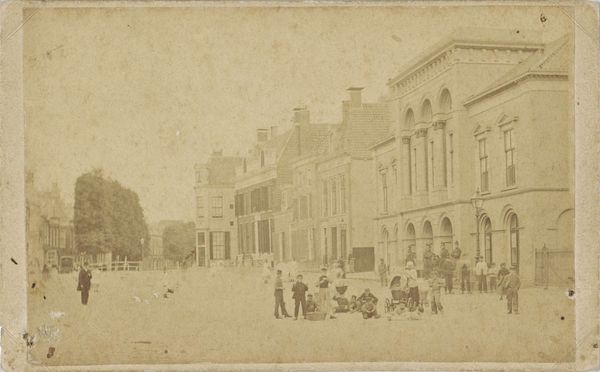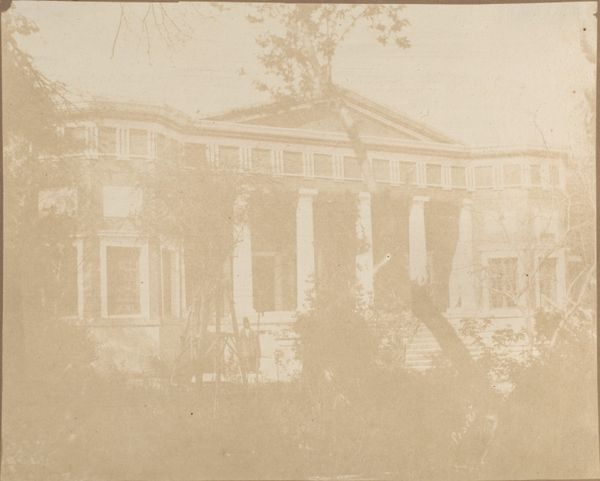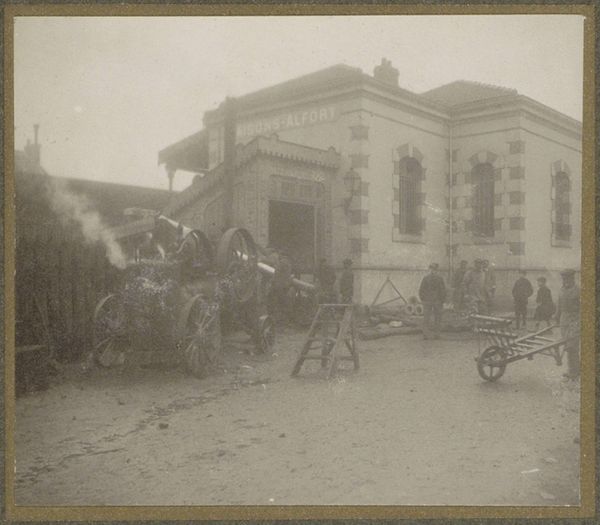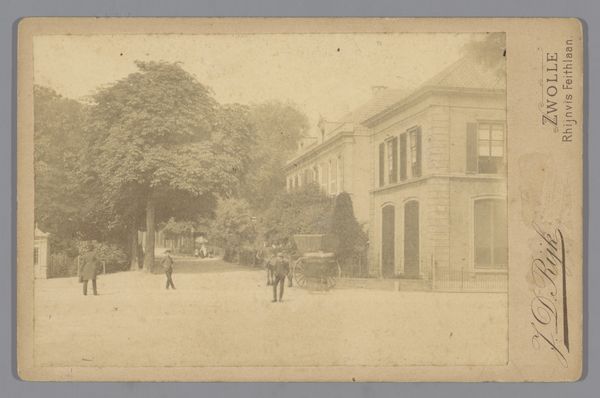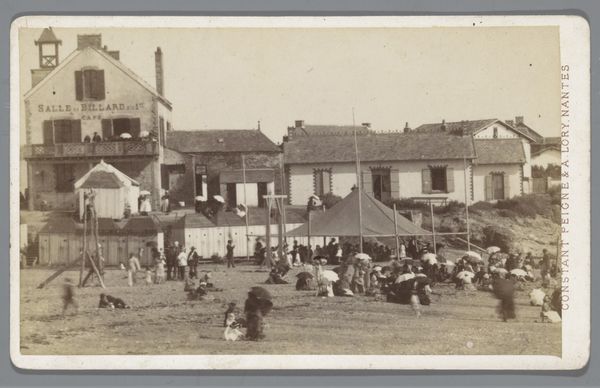
drawing, paper, ink
#
drawing
#
baroque
#
landscape
#
paper
#
ink
#
cityscape
#
history-painting
Dimensions: height 98 mm, width 152 mm
Copyright: Rijks Museum: Open Domain
Curator: Right, let's delve into this delicate drawing, "Zijaanzicht van het Huis ter Nieuburch te Rijswijk," created using ink on paper by Jan de Bisschop sometime between 1648 and 1671. Editor: It's sort of a hushed scene, isn't it? Everything seems veiled in a gentle, sepia dream. It's romantic, but there's an underlying melancholy, like a memory fading at the edges. Curator: Absolutely. And within that dream, we find this impressive estate depicted from a side angle. De Bisschop, though not always in the foreground, participates in a lineage that explores power dynamics through landscape. Consider, for instance, how the scale of architecture and land ownership reflects socio-political control. Who has access and who is barred, then and even now? Editor: Oh, definitely! It feels like looking at a stage set, or an elaborate backdrop for a story we only glimpse parts of. Those tiny figures strolling about, they're almost swallowed by the sheer monumentality of the house and grounds. They seem unaware that they are performing roles. What are the implications? I am already formulating a dark fairy tale. Curator: The historical context is also really crucial here. This estate held significant diplomatic and political importance in the Dutch Republic. Peace treaties were negotiated here! Editor: So, beyond the architectural drawing, we see an implicit claim to a seat at the table. It's not just a pretty building; it is where the cake is cut, as they say! You can see that the artist wasn't merely capturing a picturesque view but a symbol laden with societal weight. It's fascinating how this seemingly tranquil landscape reverberates with unspoken tensions. I am picking up on the desire for the artist to become part of that establishment. Curator: Precisely. This ink drawing on paper functions not only as a historical document but as a point of entry to reflect on the social architecture that these places represent and reinforce. We begin to see not a depiction, but an invitation to discuss it! Editor: It is more than an invitation; it is a glimpse through a keyhole, inviting us to construct a mystery about a building filled with secrets. You know, a location for both pleasure and politics. Thank you. Curator: Thank you. It always makes for an invigorating discussion, and a wonderful provocation, I think.
Comments
No comments
Be the first to comment and join the conversation on the ultimate creative platform.
